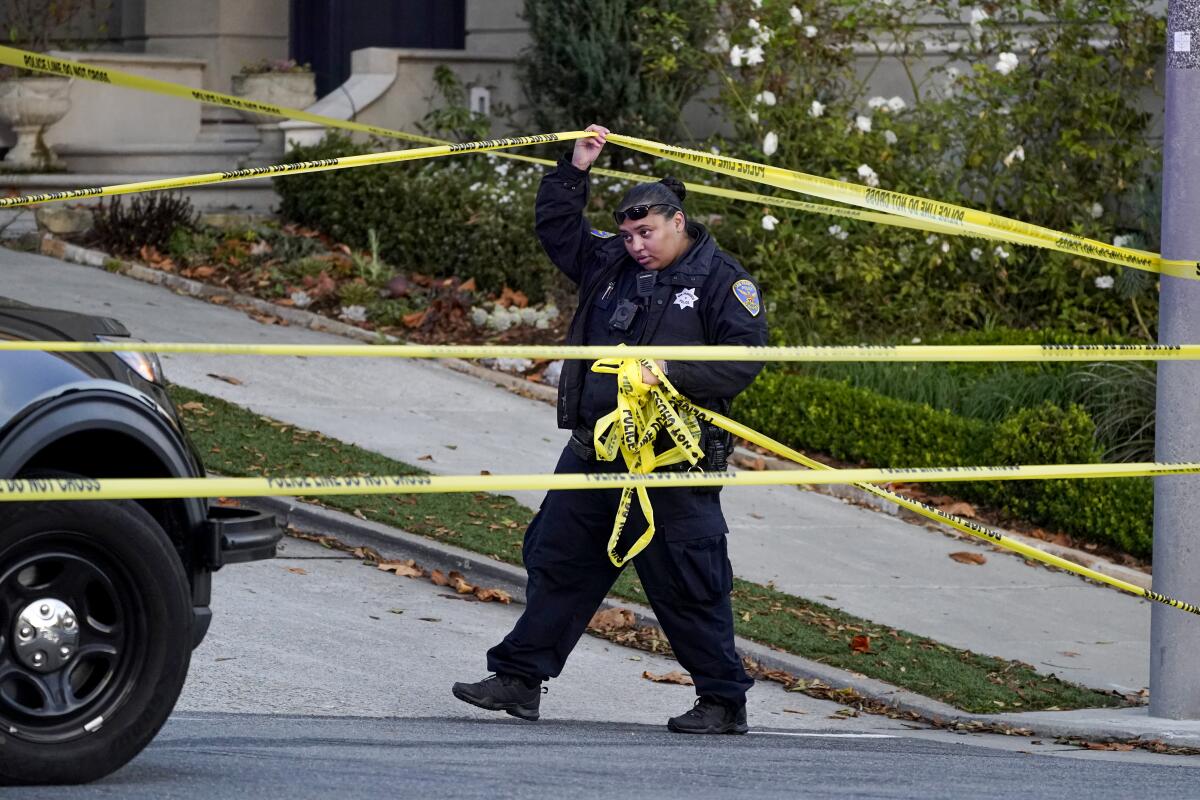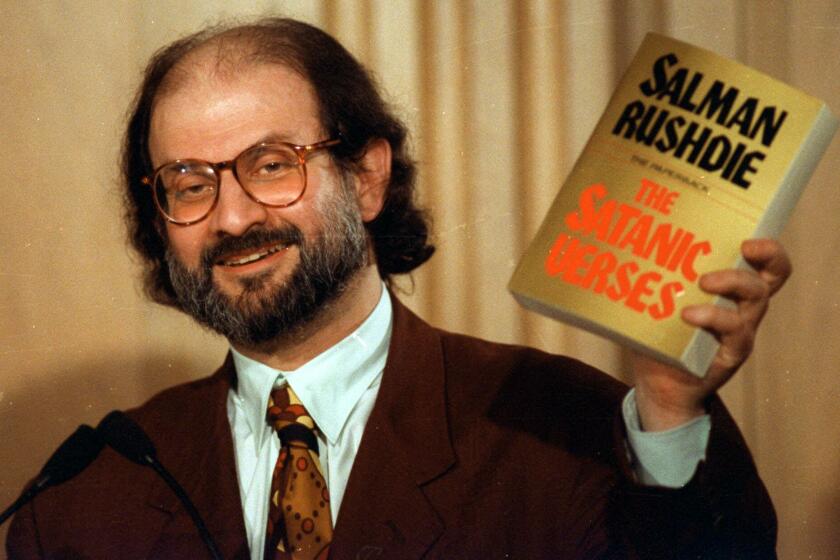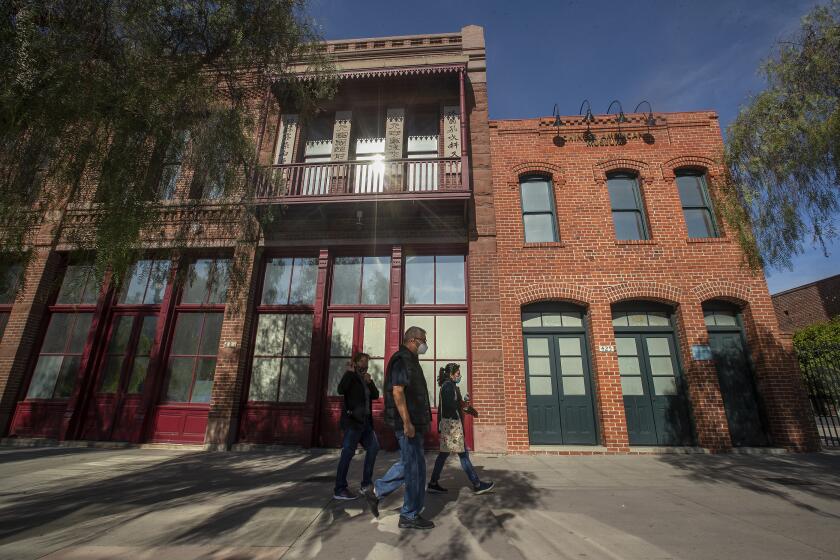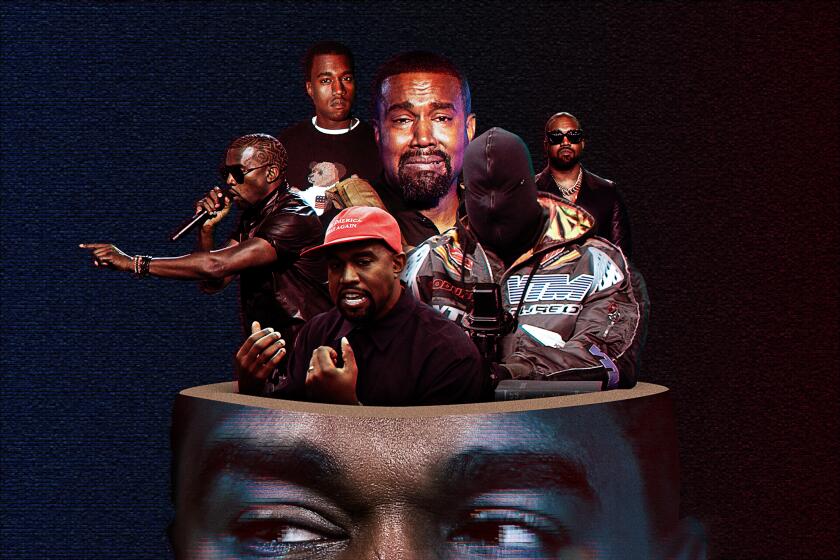Column: Don’t turn away from the rising tide of political violence in America

On the Friday in October when David DePape burst into the house where 82-year-old Paul Pelosi was sleeping and allegedly beat him with a hammer, fracturing his skull, most Americans were shocked, horrified and disgusted.
Pelosi was brutally assaulted in what prosecutors have called a politically motivated attempt to capture, kidnap and torture his wife, Nancy, then the speaker of the U.S. House of Representatives.
But should we have been shocked? I don’t think so. It was entirely in keeping with our current political climate, the bitter, polarized culture that has been teetering on the tense edge of violence for years. And it was far from unprecedented.
Opinion Columnist
Nicholas Goldberg
Nicholas Goldberg served 11 years as editor of the editorial page and is a former editor of the Op-Ed page and Sunday Opinion section.
Only a few months earlier, in August, the novelist Salman Rushdie was violently attacked not in Iran or Pakistan, but in upstate New York. A 24-year-old man named Hadi Matar stormed the stage where Rushdie was to speak and allegedly stabbed the 75-year-old author more than a dozen times in front of the audience, presumably as punishment for what Rushdie has written about Islam.
The attack left Rushdie blind in one eye, unable to use one of his hands and wounded in his neck, chest and torso.
Before that, in June, an armed man was arrested outside Supreme Court Justice Brett Kavanaugh’s house in Maryland. He was charged with “attempts to kidnap or murder” the justice.
As usual with the fast-moving American news cycle, these three unrelated incidents captured our attention for a few days. Then the world moved on.
But they shouldn’t be allowed to fade so quickly. Because they aren’t merely the isolated acts of deranged individuals. They’re part of a wave of political violence that has been spreading through the country. That’s something we have to face up to as we take stock of the year that just ended.
Salman Rushdie was marked for death and celebrated as an icon after writing “The Satanic Verses.” Last week’s near-fatal attack reminds us of the stakes
And it‘s not like it just appeared out of nowhere in 2022. The Anti-Defamation League said last February that 443 people had been killed by extremists in the U.S. over the previous 10 years. That doesn’t count mob violence, death threats, kidnapping plots or individual acts of less-than-lethal assault. There were 10 times as many threats against members of Congress in 2021 as there were in 2016. Local public officials increasingly say they fear for their safety.
Of course, we’ve always had political violence in America. It goes back to the anti-tax mobs of the Whiskey Rebellion during George Washington’s presidency, the assassination of President Lincoln by John Wilkes Booth in 1865 and the assassination of President McKinley by an anarchist in 1901.
Over the years, America has experienced violence related to slavery, immigration, the military draft and anti-Catholic sentiment. The country was particularly scarred by the scourge of anti-Black lynching.
More recently, in the tumultuous 1960s, the assassinations of President Kennedy and his brother Robert, as well as of Martin Luther King Jr. and Malcolm X, shocked the nation, as did violence from militant groups on the left such as the Weather Underground in the early 1970s.
In 1995, 168 people were killed in Oklahoma City, when a right-wing, anti-government bomber planted a powerful explosive in a federal office building.
L.A. officials put out a call for conceptual ideas for the memorial and plan to name the artist or firm who will develop the memorial in March 2023.
So political violence is hardly unheard-of, and American democracy won’t necessarily come crashing down because a subset of extremists believe it’s time to take matters into their own hands. We’ve survived it before.
But if we’re to do so again, it cannot be sloughed off with the shifting news cycle.
This time, the violence is coming mostly from the far right. According to the ADL, 75% of those killed by extremists in the decade ending in December 2021 were killed by right-wing extremists. (Although there are certainly exceptions, including the shooting of GOP Rep. Steve Scalise of Louisiana at a baseball game in 2017 by a man with a grudge against Republicans.)
Many people who support violence seem to be fueled by grievance and economic anxiety, white supremacist ideologies and crazy conspiracy theories like those associated with QAnon. Social media has an irresponsible magnifying effect, sometimes provoking or normalizing violence. The danger is increased by easy access to guns.
It has also been fueled in recent years by President Trump.
Some analysts date the latest wave of violence to the “Unite the Right” march in Charlottesville, Va., in 2017, where one person died and Trump praised the “very fine people on both sides.” In 2021, Trump’s false allegations of election fraud “provoked his supporters to violence” at the U.S. Capitol, according to the recent report of the House committee investigating the events of Jan. 6.
West hit a new low Thursday by appearing on Alex Jones’ show with white supremacist Nick Fuentes. What’s behind his spiral from hip-hop hero to far-right troll?
What else is driving this? Polls show that about one-fifth of Americans say violence can be justified to “advance an important political objective.” In 2017 and 2018, professors Nathan P. Kalmoe and Lilliana Mason found that about 40% of Democrats and Republicans agreed that the adherents of the opposing party were “not just worse for politics, but downright evil.”
DePape said that in targeting Nancy Pelosi, he was “fighting tyranny.”
On the positive side for a moment, violence that had been predicted to coincide with the 2022 midterm elections didn’t come to pass. When the results didn’t go exactly as the right had hoped, there was no new “Stop the Steal” movement to speak of, no riots at the Capitol, no extremist explosion.
Trump meanwhile, is declining in popularity. Many Republicans seem prepared to move on from him.
But the underlying threat isn’t gone. Even if Trump fades from the scene, the bitterness and sense of grievance that helped propel him to power continue to exist.
We count and categorize episodes of serious political violence to study the phenomenon and to buttress attempts to combat it. Now, as 2023 gets underway, we need to acknowledge the deep problems they reflect in our society, problems that must be reversed, not exacerbated.
More to Read
A cure for the common opinion
Get thought-provoking perspectives with our weekly newsletter.
You may occasionally receive promotional content from the Los Angeles Times.















